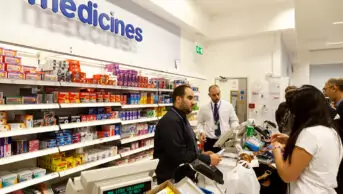
Tana R / Shutterstock
The Scottish government has reiterated its commitment for 140 prescribing pharmacists to work directly with general practices by the end of 2018.
The aim of the plans is for clinical pharmacists to manage patients with long-term conditions, freeing up GPs to spend time with patients with more complex needs.
The development of pharmacists’ role is part of the government’s long-term plans for community health services outlined in the wider, national health and social care delivery plan published on 19 December 2016.
The plan proposes that by 2022, every general practice in Scotland will have access to a pharmacist with advanced clinical skills, including prescribing.
Community Pharmacy Scotland (CPS), which negotiates on behalf of pharmacy contractors, welcomed the ongoing commitment.

Source: Community Pharmacy Scotland
Matt Barclay, director of operations at Community Pharmacy Scotland, says he hopes these new roles “can facilitate improved patient pathways between GP and community pharmacy”
Matt Barclay, its director of operations, says: “Essentially, how these new roles are being deployed is up to health boards, with some boards actively engaging with the local community pharmacy network… We would hope that these new roles can facilitate improved patient pathways between GP and community pharmacy enhancing collaboration between primary care partners.”
The government first announced its plans for primary care pharmacists in June 2015 and set aside £16.2m from its primary care fund to develop the role.
Health boards were asked to submit proposals about how they would expect pharmacists to work in their own locality. “The funding means that these pharmacists in general will be employed by health boards or, as is the case in a few health boards, local contractors are supporting release of community pharmacists to work in these roles,” Barclay adds. “How they work will be determined locally.
“While most of the emerging roles seem to be based in GP practices, we see no reason why, if patient-facing, the role could not be developed in part or in full through community pharmacy. Exploring all options and evaluating the effectiveness to patients who access the services in various settings is something we would encourage,” he says.
Scotland’s health and social care delivery plan envisages multi-professional teams working across services in primary care. “Practices will typically consist of complementary teams of professionals, bringing together clusters of health support and expertise,” it says. “Communities will have access to quicker and joined-up treatment — this might be the GP, but supported by a team including highly-trained nurses, physiotherapists, pharmacists, mental health workers and social workers. GPs will take on a greater leadership role.”
Publication of the delivery plan comes two months after the Royal College of GPs in Scotland and the Royal Pharmaceutical Society in Scotland signed a joint statement
outlining the guiding principles of a pharmacist working in a surgery.
Both organisations confirmed that patient care would benefit from greater “synergy” between the two professions.
You may also be interested in

Tackling the NHS drug budget: why we set up a regional collaboration for medicines value

Lack of joined-up working between pharmacy and general practice is ‘nonsensical’, says former BMA chair
